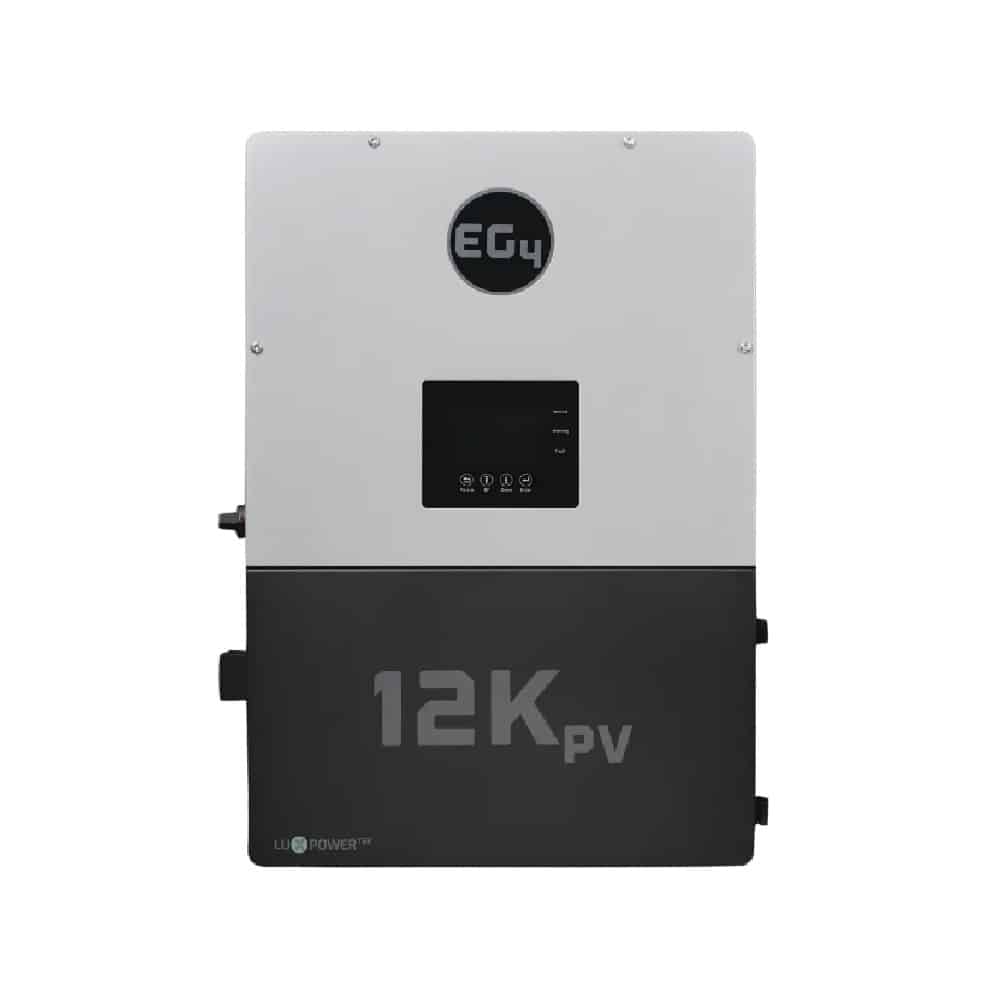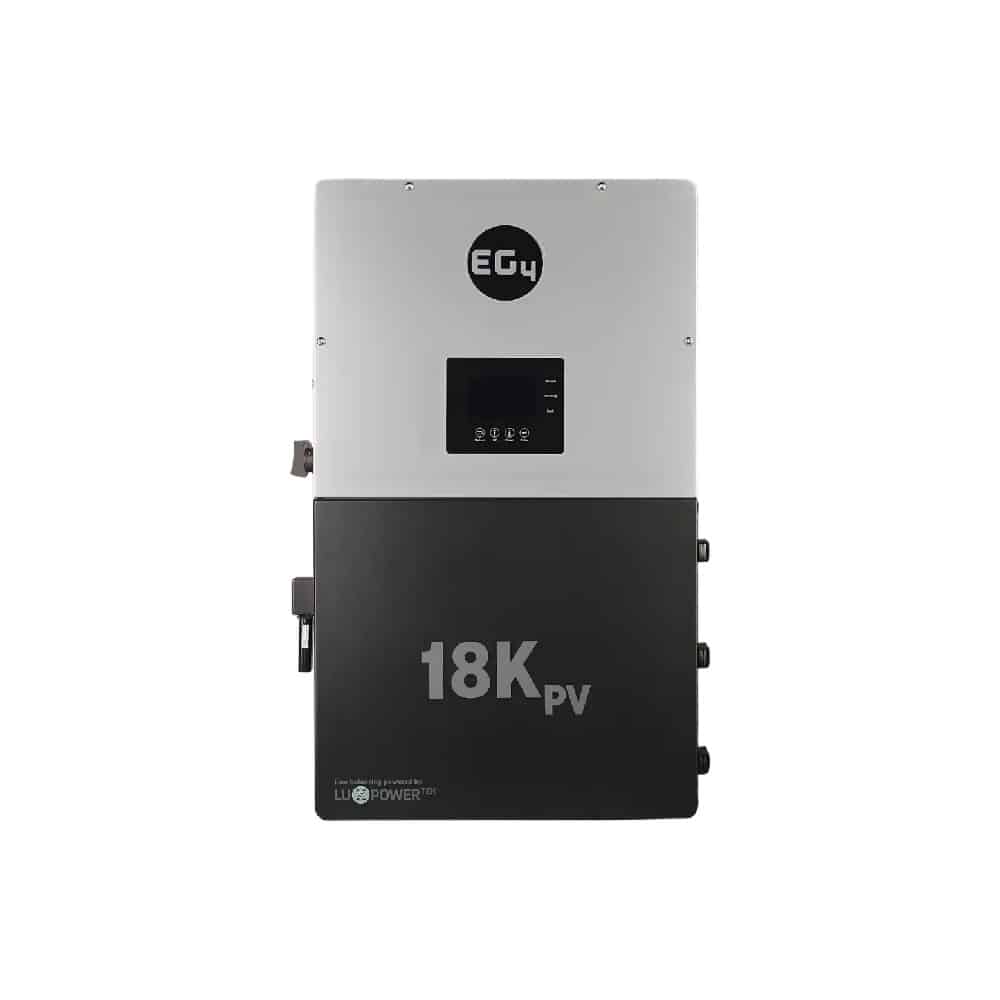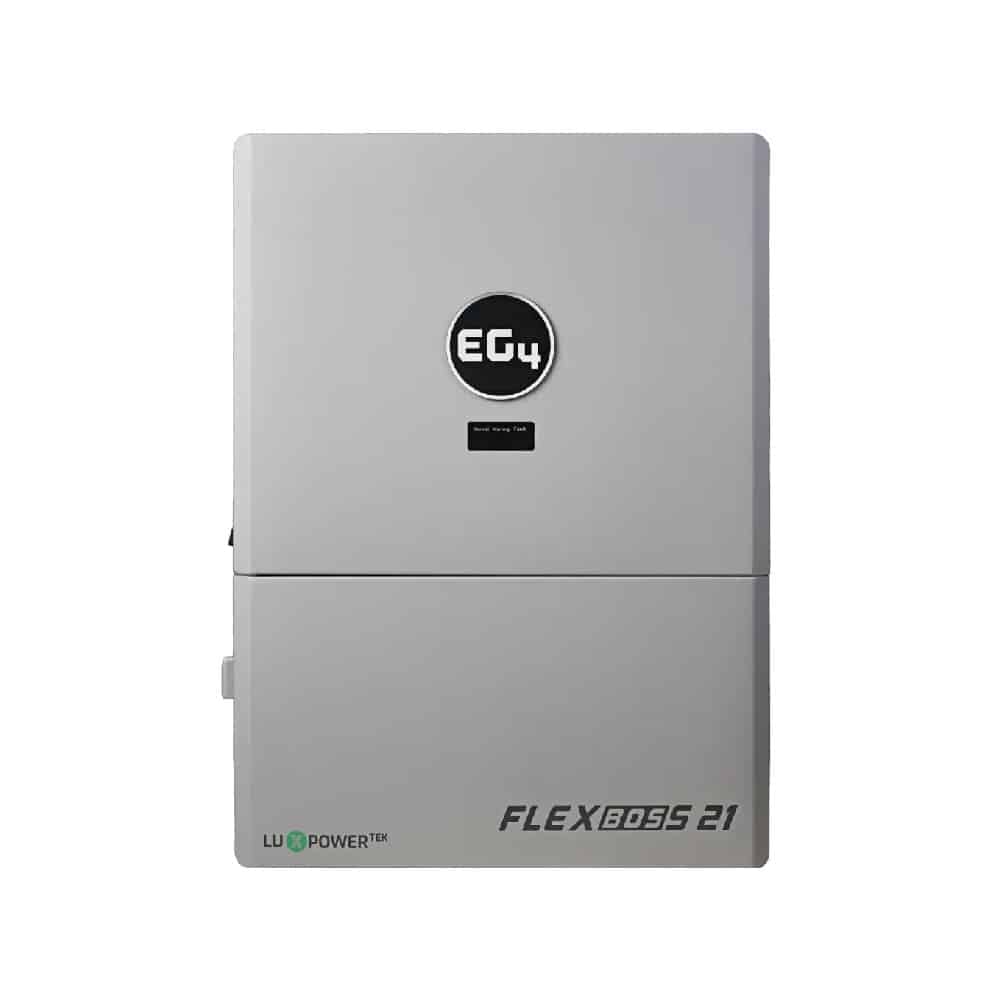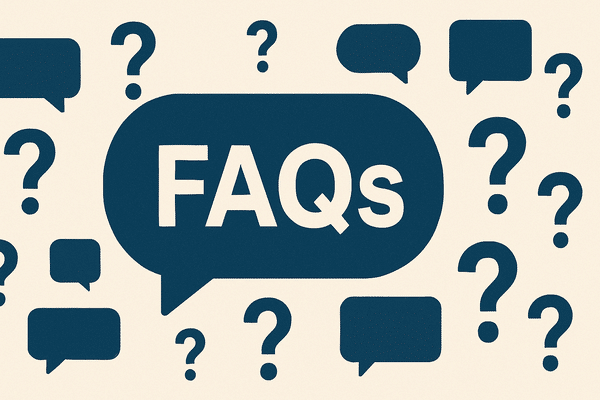📦 Fast Delivery – Order Now!
💸 Shop Safely – 100% Money-Back Guarantee
👨🔧 Lifetime Customer Support
📦 Fast Delivery – Order Now!
💸 Shop Safely – 100% Money-Back Guarantee
👨🔧 Lifetime Customer Support
Are you done paying higher electric bills while still worrying about grid failures? Solar panels alone won’t protect you from blackouts. To take full control of your energy, you need a hybrid inverter — the central command unit that decides when to pull from solar, batteries, or the grid. Choosing the right inverter determines how well your system performs during daily use and emergencies. If reliability and value matter to you, EG4 is one of the strongest contenders in the U.S. market right now. At AceFlex, we focus on the three most in-demand EG4 inverter:
This guide breaks down the differences so you can confidently pick the best match for your home or light commercial setup.
Before diving into the individual specs, it’s helpful to understand the core engineering philosophies that make the EG4 lineup a standout choice. Every EG4 inverter is built to simplify installation and maximize efficiency. Their all-in-one design integrates the inverter, charger, and transfer switch into a single unit, drastically reducing component count and complexity. Furthermore, these units offer impressive flexibility: you can scale them up by paralleling multiple inverters—up to ten units in many cases—to handle growing energy needs or large loads.
Another significant advantage is the use of high-voltage (up to 600V DC) PV input and multiple Maximum Power Point Trackers (MPPTs) on the 18kW and FlexBOSS21 models. This advanced feature reduces cable sizing requirements and simplifies array design, ultimately lowering overall system costs. Finally, for seamless, optimized performance, all EG4 hybrid inverters feature closed-loop communication, ensuring they talk directly to EG4 48V batteries (and other compatible brands) to manage charging and discharging safely and efficiently.
The EG4 12kW Hybrid Inverter (often labeled 12kPV) is the ideal entry point for standard residential solar systems. Designed with affordability and a compact footprint in mind, it shares the robust internal components and user-friendly software of its larger sibling, the 18kW model. This inverter is named for its impressive 12kW max PV input capacity, allowing you to connect a substantial solar array. It efficiently uses this solar input to deliver a continuous AC output of up to 8kW while simultaneously charging your batteries. Featuring two high-voltage MPPTs and full split-phase 120/240V output, it is perfectly suited for dependable whole-home or critical load backup and grid-tie applications. If you are looking for a reliable, expandable foundation for your energy system without overbuilding your initial capacity, this EG4 inverter is the cost-effective choice.

✅ Seamlessly integrating solar production, battery storage & grid
✅ Provides up to 12 kW continuous AC output
✅ Grid-interactive with backup support and advanced load management
Stepping up in capability, the EG4 18kW Hybrid Inverter (also known as the 18kPV) is built for homes with significant energy demands, such as those running large central air conditioning units, well pumps, or light commercial operations. While both the 12kW and 18kW models utilize 48V battery banks, the 18kW unit significantly boosts power throughput. It features a massive 18kW max usable PV input and delivers a continuous AC output of 12kW, a 50% increase over the smaller model. Crucially, the 18kPV includes three independent 600V MPPT trackers, providing greater flexibility for complex roof layouts or installations with multiple orientations. Additionally, this inverter boasts a higher surge capacity (up to 14.7kW) and an internal 200A AC bypass, simplifying installation into existing main service panels. The 18kPV is the choice for users who prioritize maximum immediate power and scalability up to 120kW (by paralleling ten units).

✅ Hybrid inverter combining solar, storage & grid inputs
✅ Delivers up to 18 kW continuous AC power
✅ Seamless grid integration with backup & load-shedding capability
The FlexBOSS21 is EG4’s latest offering, engineered for maximizing solar utilization and streamlined installation. While its battery-only continuous AC output is 12kW (matching the 18kPV), its true strength is realized under sunlight: it can deliver an impressive 16kW of continuous AC output when solar is actively generating. It also supports an industry-leading 21kW of usable PV input.
The FlexBOSS21 enhances array design flexibility with three highly-rated MPPTs (26A/26A/15A) and boasts a superior momentary surge capacity of up to 24kW, making it highly capable of starting large appliances like 5-ton AC units. A key distinction is its design: the FlexBOSS21 is optimized to be paired with the EG4 GridBOSS Microgrid Interconnect Device (MID) , which often allows for simplified wiring and can eliminate the expensive need for critical load subpanels or main panel upgrades on 200A services. Unlike the 18kPV, the FlexBOSS21 does not include an onboard LCD screen, relying instead on the EG4 mobile app for monitoring and control. Choose the FlexBOSS21 if your priority is maximum energy capture, superior output during the day, and minimizing installation complexity through the GridBOSS ecosystem.

✅ Modular 3-phase hybrid inverter
✅ 12 kW continuous AC output
✅ Integrated solar, storage & grid management
| Feature | EG4 12kW Hybrid (12kPV) | EG4 18kW Hybrid (18kPV) | EG4 FlexBOSS21 12kW Hybrid |
|---|---|---|---|
| Max Usable PV Input | 12kW | 18kW | 21kW |
| Continuous AC Output (Battery Only) | 8kW | 12kW | 12kW |
| Max AC Output (with PV Gain) | 8kW (Clipped at 8kW) | 12kW (Clipped at 12kW) | 16kW |
| Number of MPPTs | 2 | 3 | 3 |
| Internal AC Bypass | Yes | 200A | 90A (Needs GridBOSS for 200A service) |
| Primary Use Case | Entry-level, Critical Load Backup | High Power, Maximum 12kW Continuous Output | Maximum Solar Harvest, 16kW Output, GridBOSS Integration |
Each EG4 model shines in different real-world scenarios. The 12kW unit is a strong match for homeowners who want reliable backup without overspending. It keeps essentials powered during outages—lights, refrigerators, Wi-Fi, sump pumps, or medical devices. It also works well for cabins, workshops, or rental units that don’t require large surge loads.
The 18kW inverter steps in when energy demand is non-negotiable. Think large homes with central HVAC, well systems, EV chargers, or home offices that must stay online. Small businesses like farms, auto garages, or retail shops benefit too. It delivers stable power without tripping under heavy startup loads.
The FlexBOSS21 is built for users who want to push solar harvest to the maximum. It’s ideal for regions with high sun exposure like Texas, Arizona, or Florida. It also fits homes that consume most of their energy during the day—pool pumps, air conditioning, or EV charging. With the GridBOSS MID, it becomes a plug-and-play whole-home solution without major electrical panel upgrades.
No matter your setup—suburban home, off-grid retreat, rental property, or hurricane safe house—there’s an EG4 configuration designed to handle it with zero drama.
While the inverter is the brain, the battery is the heart of any reliable off-grid or backup system. Every EG4 inverter is engineered to pair perfectly with the EG4 48V lithium-iron phosphate (LFP) battery line—including the popular PowerPro and Powerwall models. This synergy is made possible through proprietary closed-loop communication. This protocol allows the inverter and battery to constantly exchange data, optimizing charging rates, managing state-of-charge, and dramatically extending battery lifespan. Choosing an EG4 battery ensures guaranteed compatibility and the highest level of performance, which we will cover in depth in our post dedicated to EG4 battery storage solutions.
EG4 keeps things simple after the purchase as well. Unlike many overseas inverter brands, EG4 offers U.S.-based support through Signature Solar. If you ever need parts or warranty assistance, you’re not stuck waiting on international responses. The wiring layout, manuals, and labeling follow North American electrical standards, so most electricians feel comfortable working with them. DIY installers also appreciate the straightforward design. Whether you are installing today or expanding later, EG4 gives you control—not confusion.

The decision between the EG4 12kW, 18kW, and EG4 FlexBOSS21 12kW Hybrid Inverter ultimately comes down to your system goals and budget.
No matter which EG4 inverter you choose, you are investing in a NEMA 4X rated, UL-certified, high-efficiency, all-in-one hybrid solution backed by an excellent warranty. Selecting the right inverter today ensures your system is perfectly sized for tomorrow’s energy independence.

The EG4 12kW delivers 8kW of continuous AC output from batteries, while the EG4 18kW delivers 12kW. The 18kW model also supports higher solar input, includes a third MPPT, and features a built-in 200A AC bypass for easier panel integration.
Yes. All three EG4 models support full-home backup when paired with the proper battery capacity. The FlexBOSS21 and 18kW are the better choices for larger appliances like central AC units or well pumps.
Yes. EG4 inverters can be stacked in parallel, supporting up to ten units for a total system capacity of up to 120kW.
Yes, they can operate in grid-tie mode without batteries. However, without batteries you won’t have backup power during an outage.
EG4 inverters work best with EG4 48V lithium (LFP) batteries like the PowerPro or Powerwall. They can also run with other brands in open-loop mode if closed-loop compatibility isn’t available.
High-voltage input allows longer panel strings and smaller wire sizes, which reduces material cost and simplifies array design.
The FlexBOSS21 can run without it, but using the GridBOSS MID often eliminates the need for a critical load subpanel and can simplify 200A service installations.
Yes. All current EG4 hybrid inverter models are UL-certified and NEMA 4X rated for indoor or outdoor installation.
The system is designed for easy setup, but for code compliance and warranty protection, installation by a licensed electrician or certified installer is recommended.
The EG4 18kW and FlexBOSS21 offer the most flexibility. Both allow high solar input and support large system growth through parallel stacking.
Yes. EG4 inverters are widely regarded as one of the best value options in the hybrid inverter market. They deliver strong performance, high efficiency, and advanced features at a lower price point than many legacy brands like Sol-Ark or Schneider. Installers and DIY users consistently praise their reliability and expandability.
EG4 is a brand developed and distributed by Signature Solar in the United States. The inverters are manufactured by partnered OEM factories overseas, but the engineering, certification, and support infrastructure are managed by Signature Solar.
For the EG4 12kW Hybrid Inverter, most installations use a 50A to 60A double-pole breaker for 240V split-phase connection. However, breaker size may vary depending on local electrical code and wiring configuration, so always follow the installation manual or consult an electrician.
Signature Solar is not the same company as EG4, but Signature Solar owns and manages the EG4 brand. They handle distribution, engineering oversight, and warranty support for EG4 products in the U.S.
Most EG4 hybrid inverters are rated for a 10- to 15-year operational lifespan when installed correctly. They include a standard 5- to 10-year warranty, depending on the model, and are designed to match the lifecycle of modern lithium battery systems.
AceFlex is one of the leading online retailers of renewable energy products and offers a wide range of solar products. We work with well-known manufacturers and wholesalers and can offer you cost-effective products in the field of photovoltaics so that you too can contribute to the energy transition.
Looking for an experienced team for planning your photovoltaic system without the hassle of doing it yourself? We are your trusted partner, offering comprehensive nationwide solutions. We provide expert consultation and supply of both photovoltaic systems and storage units tailored to your specific needs.
© 2025 Aceflex All Rights Reserved. Design by Media Pantheon, Inc.